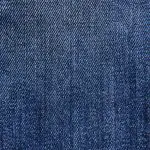You might not realize that fire-resistant fabrics can greatly reduce the risk of burns without compromising comfort. These materials, like aramid fibers and treated cotton, inhibit flames and provide thermal protection. They're vital in various settings, from industrial workplaces to military gear, ensuring safety in hazardous environments. Understanding how these fabrics work and their benefits could be essential for your safety or that of your team. How do these fabrics undergo rigorous testing to meet strict standards, and what makes them so effective?
Table of Contents
Key Takeaways
- Fire-resistant fabrics integrate materials and chemicals to prevent flame spread and provide thermal protection.
- Aramid fibers and treated cotton are key materials, offering heat resistance, durability, and comfort.
- These fabrics are essential in industrial settings, home decor, automotive upholstery, and military gear.
- Rigorous testing and adherence to standards like NFPA 701 and ISO 15025 ensure fabric effectiveness.
- Proper cleaning, maintenance, and storage are crucial for preserving the protective qualities of fire-resistant fabrics.
How Fire-Resistant Fabrics Work
Fire-resistant textiles function by integrating materials and chemical treatments that inhibit or slow down the spread of flames. When you explore the mechanics of these textiles, you'll discover that their primary aim is to provide thermal protection and flame resistance. These textiles are crafted to withstand ignition and halt the fire from spreading, which can be vital in high-risk environments.
To achieve flame resistance, manufacturers treat textiles with specific chemicals that react to heat. These chemicals create a barrier that decelerates the combustion process, giving you valuable time to escape or extinguish the fire.
It's not just about slowing the flames, though. The thermal protection element ensures that the textile doesn't transmit heat to your skin, reducing the risk of burns.
Comprehending how these textiles operate empowers you to make well-informed decisions about safety gear and protective clothing. Their effectiveness relies on a combination of advanced chemical treatments and carefully chosen materials.
Key Materials Used
When considering fire-resistant fabrics, you'll find that aramid fibers and treated cotton play essential roles. Aramid fibers offer excellent heat resistance and durability, while treated cotton provides a balance of comfort and flame retardancy.
Understanding these materials' benefits can help you make informed choices for protective clothing.
Aramid Fiber Benefits
Aramid fibers offer outstanding benefits, including exceptional heat resistance and durability, making them essential for fire-resistant fabrics. When you're selecting materials for protective clothing in industrial applications, aramid fibers should be at the top of your list. These fibers don't just withstand high temperatures; they excel at it, maintaining their integrity even in the most extreme environments.
To keep you engaged, here are some key advantages of aramid fibers:
- Superior Heat Resistance: Aramid fibers can endure temperatures up to 500°F (260°C) without melting or degrading.
- Exceptional Durability: These fibers are incredibly strong, ensuring your protective clothing lasts longer and performs better.
- Chemical Resistance: Aramid fibers resist a wide range of chemicals, making them versatile for various industrial applications.
Understanding these benefits empowers you to make informed decisions when choosing materials for protective clothing. Aramid fibers don't just offer heat resistance and durability; they provide you with peace of mind knowing that safety isn't compromised.
Mastering the use of aramid fibers in your protective gear will significantly enhance safety and efficiency in any high-risk industrial environment.
Treated Cotton Properties
While aramid fibers provide exceptional heat and chemical resistance, treated cotton offers a unique blend of comfort and fire-resistant properties essential for protective clothing.
You'll appreciate that treated cotton retains the softness and breathability inherent to natural fibers, making it a favored choice for extended wear.
The secret behind its fire-resistant capabilities lies in advanced chemical treatments applied to the fabric. These treatments create a barrier that inhibits ignition and slows down the spread of flames.
When considering treated cotton, it's important to understand the significance of durability testing. You want a fabric that not only resists flames but also withstands repeated laundering and harsh conditions.
Rigorous durability testing ensures that the chemical treatments remain effective over time, providing consistent protection. This reliability is essential for professionals who face fire hazards daily, from firefighters to industrial workers.
Benefits of Fire-Resistant Fabrics
Fire-resistant fabrics offer necessary protection by greatly decreasing the risk of injury in hazardous environments. When you're working in the chemical industry, workplace protection becomes paramount. Wearing fire-resistant clothing can mean the difference between a minor incident and a catastrophic injury. These fabrics are engineered to resist ignition and prevent the spread of flames, keeping you safer on the job.
At home, fire-resistant fabrics can provide an extra layer of security, especially in children's clothing. Ensuring your child's pajamas and everyday wear are made from fire-resistant materials can protect them from accidental burns and fires, giving you peace of mind.
Consider these key benefits:
- Enhanced Safety: Fire-resistant fabrics significantly reduce the risk of burns and injuries, making them essential for both workplace and home environments.
- Durability: These fabrics are designed to maintain their protective qualities even after multiple washes and consistent wear.
- Comfort: Modern fire-resistant fabrics aren't only effective but also comfortable to wear, ensuring that you don't have to sacrifice comfort for safety.
Common Applications
In various industries and everyday settings, you'll find fire-resistant fabrics used to enhance safety and protection. These fabrics play a pivotal role in safeguarding lives and property, making them essential in numerous applications.
In the industrial sector, fire-resistant fabrics are a cornerstone. Workers often wear industrial uniforms made from these materials to protect against potential hazards like flames and sparks. This protection is essential in environments such as oil refineries, chemical plants, and welding shops.
For your home, these fabrics are increasingly used in home decor items, including curtains, upholstery, and carpets, to minimize fire risks and enhance overall safety.
In the automotive industry, fire-resistant fabrics are commonly found in automotive upholstery. They provide an added layer of safety for passengers, particularly in high-performance vehicles where the risk of fire is elevated.
The military also relies heavily on these fabrics. Military gear, including uniforms and equipment covers, often incorporates fire-resistant materials to protect personnel in combat situations, where exposure to fire or explosions is a constant threat.
Testing and Standards
To guarantee these fire-resistant fabrics perform effectively, rigorous testing and adherence to strict standards are paramount. You need to verify that these fabrics meet both flame retardant regulations and heat resistance certifications to maintain safety in high-risk environments.
Standards like the NFPA 701 and ISO 15025 outline specific criteria for evaluating the performance of fire-resistant fabrics. These tests measure how well the fabric can resist ignition and limit the spread of flames.
To give you a better understanding, here are some key tests and standards:
- Vertical Flame Test (ASTM D6413): This test measures the flame resistance of textiles by exposing them to a vertical flame for a specified duration.
- Thermal Protective Performance (TPP) Test: It evaluates the fabric's ability to protect against heat and flame.
- Heat and Thermal Shrinkage Test: This test assesses how the fabric behaves under prolonged heat exposure, confirming it doesn't shrink excessively or lose its protective qualities.
Care and Maintenance
To keep your fire-resistant fabrics effective, you need to focus on regular cleaning practices, proper storage techniques, and routine inspections and repairs.
Always follow the manufacturer's instructions for washing and avoid using harsh chemicals.
Store your fabrics in a cool, dry place and check them frequently for signs of wear or damage.
Regular Cleaning Practices
Proper cleaning methods are necessary for maintaining the fire-resistant properties of your fabrics. To guarantee your protective garments remain effective, you need to follow specific cleaning frequency guidelines and best practices.
Regularly clean your fire-resistant fabrics based on the manufacturer's recommendations, typically after every use or exposure to contaminants. This helps in preserving their safety features and extending their lifespan.
When tackling stains, immediate action is vital. Utilize proper stain removal techniques to avoid compromising the fabric's protective qualities. For instance, pre-treat stains with a mild detergent before washing.
Here are some best practices to keep your fire-resistant fabrics in top condition:
- Avoid using bleach or fabric softeners: These chemicals can degrade the fabric's fire-resistant properties.
- Wash in cool or warm water: Hot water can break down the fibers more quickly.
- Air dry or use low heat settings: High heat can diminish the fabric's effectiveness over time.
Prevention tips include routinely inspecting for stains and addressing them promptly. By adhering to these practices, you'll maintain the integrity and safety of your fire-resistant fabrics. Always check the care label for specific instructions to ensure best performance.
Proper Storage Techniques
Storing your fire-resistant fabrics properly is just as critical as cleaning them to maintain their protective qualities. To guarantee fabric preservation, you need to implement strategic storage solutions.
First, always store fire-resistant fabrics in a cool, dry place away from direct sunlight. UV rays and heat can degrade the fabric's protective properties over time. Use breathable storage bags or containers that allow air circulation to prevent moisture build-up, which can lead to mold and mildew.
When it comes to fabric organization, it's vital to keep your fire-resistant garments separated from regular clothing. This prevents cross-contamination and ensures that harmful substances don't compromise the fabric's integrity. Label your storage areas clearly and follow the manufacturer's safety guidelines for best results.
Avoid hanging heavy fire-resistant fabrics, as this can cause them to stretch and lose shape. Instead, fold them neatly and avoid placing heavy items on top to prevent creases and damage. Regularly rotate your stock to avoid prolonged compression in one area.
Inspection and Repairs
Regularly examining your fire-resistant textiles is essential to guaranteeing their effectiveness and longevity. To maximize fabric lifespan, maintenance should never be overlooked. Start by establishing a routine inspection schedule. Look for signs of wear and tear, such as thinning fabric, discoloration, or small holes. Identifying these issues early allows you to apply effective repair techniques, prolonging the fabric's protective qualities.
Effective inspection and repair techniques include:
- Visual Inspections: Regularly examine the fabric under good lighting to spot any imperfections.
- Touch Testing: Feel the fabric for any weak spots or inconsistencies that might indicate deterioration.
- Functional Testing: Periodically test a small, inconspicuous area of the fabric to make sure it still meets fire-resistance standards.
When it comes to repairs, always follow manufacturer guidelines. Small tears can often be fixed with a fire-resistant patch, but more extensive damage may require professional attention. This proactive approach helps maintain the fabric's integrity, ensuring it remains a reliable barrier in hazardous situations.
Choosing the Right Fabric
Selecting the appropriate fire-resistant fabric involves considering factors like material type, durability, and compliance with safety standards. You can't underestimate the significance of fabric selection when it comes to guaranteeing safety and longevity.
Start by identifying the material type that best suits your specific needs. For example, materials like Nomex, Kevlar, and treated cotton have distinct properties that make them suitable for different environments.
Understanding safety standards is essential. Look for fabrics that meet or exceed regulations such as NFPA 2112, which specifies criteria for flame-resistant garments used in industrial settings. Adherence to these standards ensures that the fabric will perform reliably under fire-risk conditions.
Durability is another vital factor. You want a fabric that can withstand repeated wear and washing without losing its fire-resistant properties. Check the manufacturer's guidelines on how to maintain the fabric, guaranteeing it retains its protective capabilities over time.
Lastly, don't overlook comfort. A fabric that's uncomfortable won't be worn consistently, negating its protective benefits. Prioritize materials that offer a balance of protection and comfort to ensure they're used effectively.
Frequently Asked Questions
Are Fire-Resistant Fabrics Environmentally Sustainable?
Imagine the irony: fire-resistant fabrics saving lives but harming the planet. You must consider their environmental impact and sustainability. Production methods often involve harmful chemicals, making it important to weigh their benefits against ecological costs.
Can Fire-Resistant Fabrics Be Dyed in Different Colors?
Yes, you can dye fire-resistant fabrics in various colors. The dyeing options available offer extensive color customization, allowing you to achieve the precise shade you desire while maintaining the fabric's fire-resistant properties.
How Does the Cost of Fire-Resistant Fabrics Compare to Regular Fabrics?
When comparing costs, fire-resistant fabrics can be up to 50% more expensive than regular fabrics. However, their durability benefits, such as lasting longer and resisting wear, often make them a more cost-effective choice in the long run.
Are Fire-Resistant Fabrics Comfortable to Wear Daily?
You're wondering if fire-resistant fabrics offer daily comfort. Yes, they do. Manufacturers prioritize fabric breathability and durability, ensuring you feel safe and comfortable. These fabrics balance safety and comfort for everyday wear, enhancing your experience.
What Innovations Are Expected in the Future of Fire-Resistant Fabrics?
Fascinatingly, you'll find sustainable technology and innovative materials are converging to revolutionize fire-resistant fabrics. Expect advancements in eco-friendly fibers and smart textiles that enhance both safety and comfort. It's an exciting time for those seeking mastery.
- How Does Ring Spun Cotton Affect Garment Fit and Shape Retention? - August 13, 2024
- What Are the Challenges in Producing Ring Spun Cotton? - August 13, 2024
- Is Ring Spun Cotton Suitable for Plus-Size Clothing? - August 13, 2024







